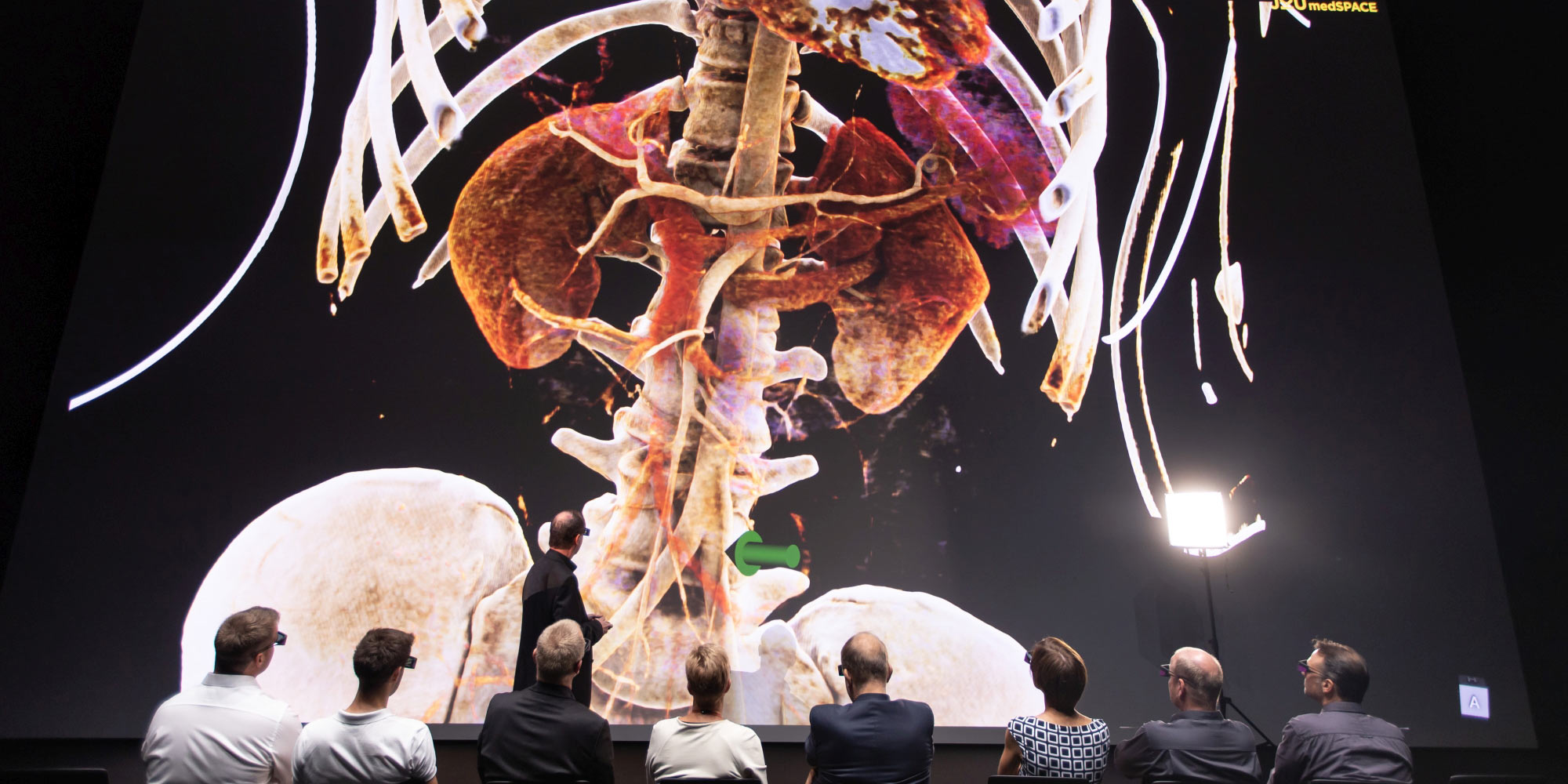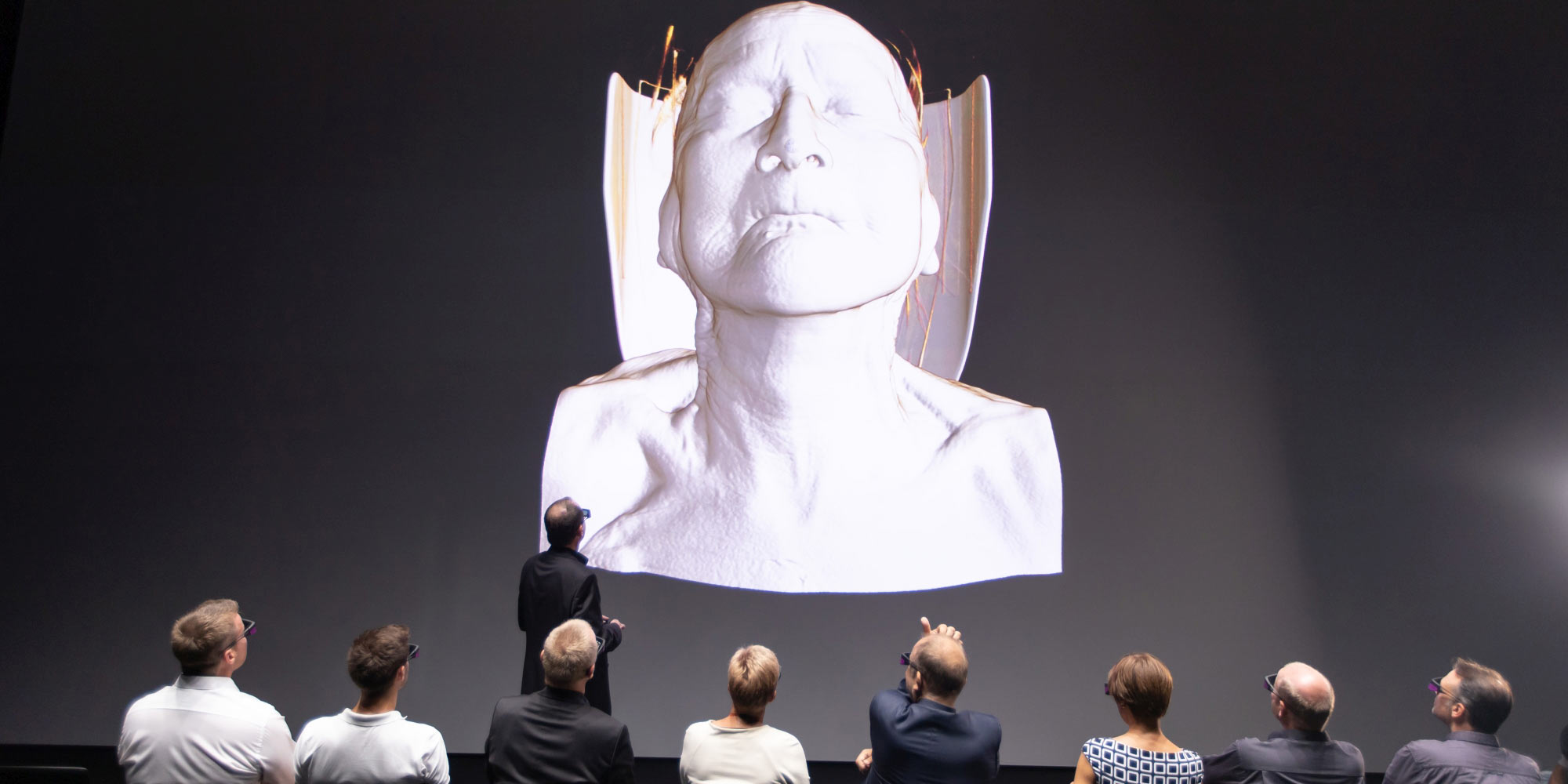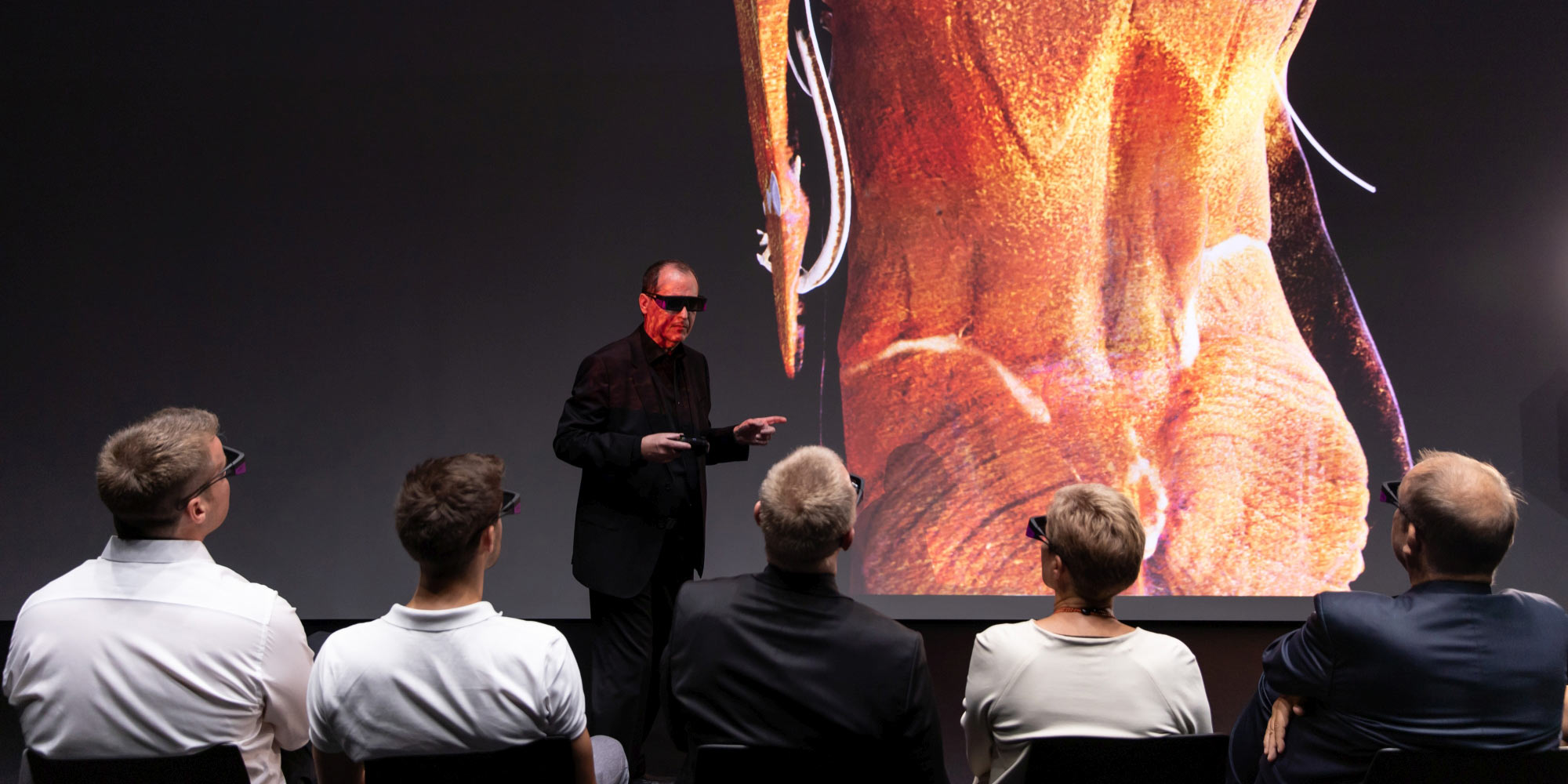The Deep Space 8K at the Ars Electronica Center in Linz, developed and managed by the Ars Electronica Futurelab, brings research in a wide variety of disciplines to life. From alien worlds and collaboration with real robots for individual participants to immersive experiences for large groups of up to 100 people – Deep Space 8K is a unique 3D infrastructure for science.
Click here to read the first part of our blog on Deep Space research, from natural user interfaces to interaction with robots.
The strengths of the Deep Space 8K were explored, for example, by the EU-funded Immersify research program. The goal of the research conducted by numerous institutions from various European countries: To create media that is more immersive than ever before – 360-degree, 3D and extremely high-definition videos, 8K live streams, animations and other content so lifelike that the real world all around is almost forgotten. In addition to technology, from 8K+ graphics to data compression and new media formats, the focus was also on participation and interaction of larger groups with the immersive media.
From megacity to performance
Another multi-year research project was Tumcreate, an international research platform aimed at improving public transportation in Singapore through electric mobility and self-driving vehicles. The Interactive Research Lab was developed: With virtual reality glasses, the megacity could be explored in the Deep Space 8K from the perspective of pedestrians. Research was carried out, for example, into how encounters with autonomous vehicles and other road users take place, how different designs of vehicles or stations affect them, and what effective information and guidance systems might look like.
But the Deep Space 8K also plays an important role in artistic research. What will the stage of the future look like? What interactive technologies will allow not only directors and artists themselves, but also the audience to help shape the visual and auditory environment of a dance, theater or music performance in real time? Without a loss of quality in dramaturgy and aesthetic experience or even an unpleasant compulsion on the part of the audience to participate? St(Age) of Participation, a publicly funded artistic research project that explored multimedia, interactive and three-dimensional technologies for stage performances of the future, dealt with questions like these.
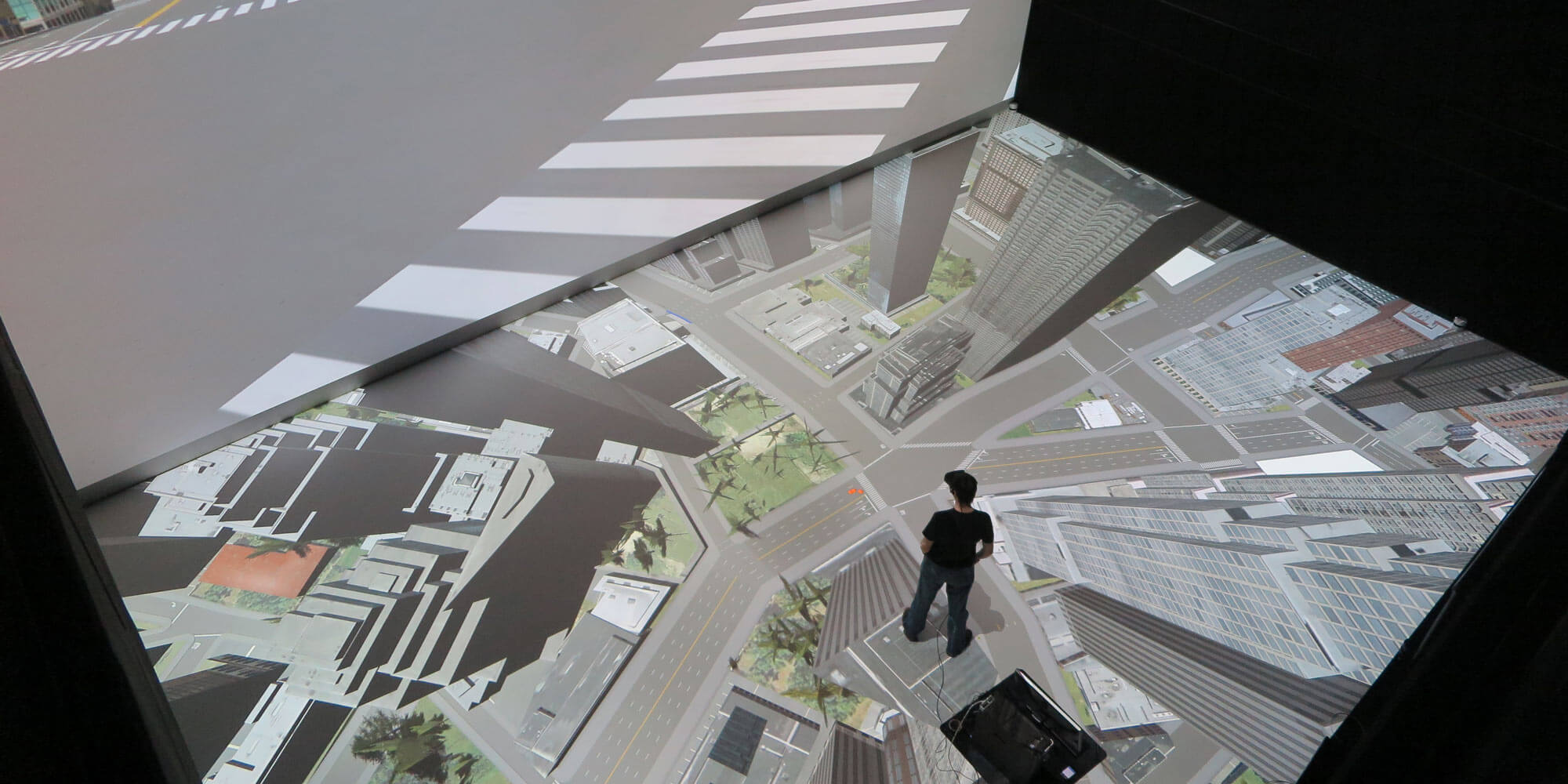


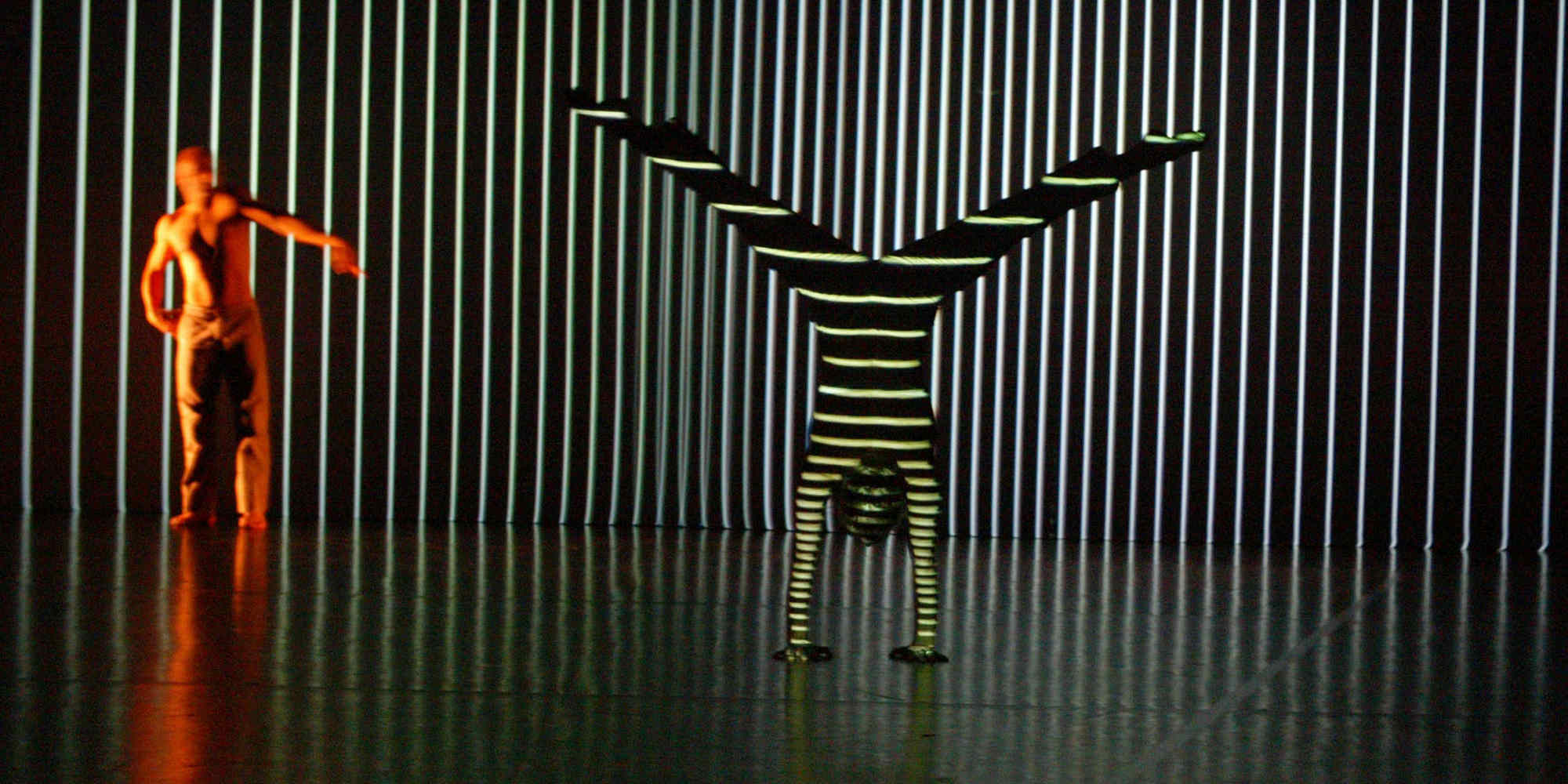
Revolution in medical studies
The JKU medSPACE project shows that research in the Deep Space 8K can be the start of a revolution: in 2015, software from Siemens was presented for the first time at the Ars Electronica Center as a prototype that made real MRI and CT data in 3D literally walkable and completely new experiences. Years of research with the Ars Electronica Futurelab made it possible to open the JKU medSPACE at the JKU Linz Medical Faculty in 2021: the world’s first virtual anatomy room. It is a milestone in teaching that will provide future generations of physicians with a completely new image of the human body. After all, patient data can be anonymized here in just a few minutes, and explored together as freely rotatable and zoomable, larger-than-life 3D content.
Finding new applications for interactive media content and adapting the technology of Deep Space 8K as a universal infrastructure for specific applications such as virtual anatomy is one of the research goals of the Ars Electronica Futurelab. In addition, the team is researching, among other things, ways to link Deep Space 8K with similar spaces. How can groups of people be stereoscopically captured and displayed in motion at another location in real time? How can groups in different locations communicate and play together? What requirements must such technology meet in order to provide long-term added value for society, beyond the allure of novelty and pure technological progress? These questions and many more are driving the Ars Electronica Futurelab team to continue exploring the future artistically with research and development around Deep Space 8K.
